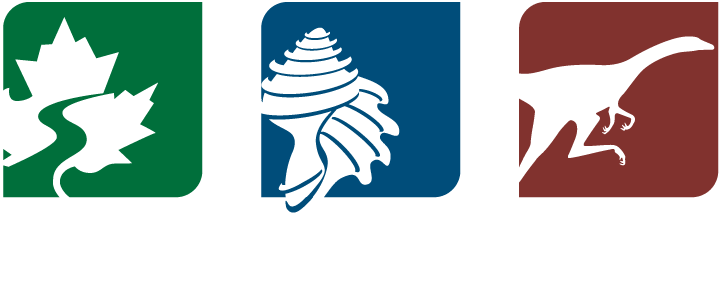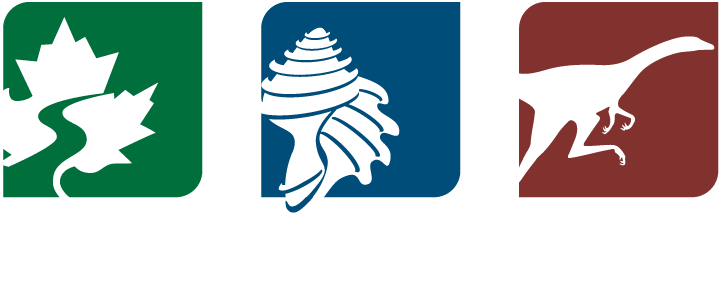Teach Climate Science
UPDATE: Please visit our Teach Climate Change page for the latest information and resources.
Find resources and activities that accompany The Teacher-Friendly Guide™ to Climate Change, and learn about our professional development workshops for teachers.
Climate Change Teaching Toolkits: BY TOPIC
ENERGY AND ATMOSPHERE
Infrared energy
Infrared absorption by carbon dioxide
Carbon dioxide and temperature
Box Model: steady state vs. non-steady state behavior
Heat capacity
Thermal expansion of water
CARBON AND WATER CYCLES
Carbon Cycle
Diurnal variations in carbon dioxide
How many molecules make a trace gas?
NOAA Mauna Loa data and rate of CO2 increase
Respiration
Hydrologic Cycle
Rainfall and river response
CLIMATE CHANGE MITIGATION
Renewable Energy
Solar energy
Near-surface geothermal energy
Wind energy
Carbon Sequestration
Afforestation and Reforestation: tree biomass & carbon dioxide storage
COMMUNICATION AND ADVOCACY
Community Science
Climate Change Teaching Toolkits and Resources: by Chapter of The Teacher-Friendly Guide™ to Climate Change
This list of activities includes ones we have developed as well as links to resources and activities developed by partners and other organizations.
Overview: A Quick-Start Guide to the 12 Chapters of the TFG to Climate Change (Download, 9.6 MB)
Chapter 1. Why Teach About Climate Change? (Find enhanced online version here, or download pdf 2.7 MB)
Chapter 2. What Should Everyone Understand about Climate Change and Energy? (Download, 3.9 MB)
Chapter 3. What is Climate? (Find enhanced online version here, or download pdf, 14.9 MB)
Chapter 4. Climate Change through Earth History (Download, 16.6 MB; see also Introduction to Climate on Earth@Home)
Chapter 5. Evidence for and Causes of Recent Climate Change (Find enhanced online version here, or download pdf, 4.6 MB)
Chapter 6. US Regional Climates, Current and Future (Download, 18.4 MB; see also updated, online guides to climates of U.S. regions on Here On Earth)
Earth Science guides to regions of the United States, including sections on climate.
Click here
An interactive, online version of the Cayuga Nature Center’s exhibit about climate change in Central New York, its impacts, and solutions.
Chapter 7. Climate Change Mitigation (Find enhanced online version here, or download pdf, 10.8 MB)
Chapter 8. Geoengineering (Download, 6.3 MB)
Chapter 9. Climate Change Adaptation (Find enhanced and updated online version here, or download, 5.2 MB)
Chapter 10. Obstacles to Addressing Climate Change (Download, 1.1 MB)
Chapter 11. Perspective (Download, 3.6 MB)
Chapter 12. Frequently Asked Questions about Climate Change (Download, 5.2 MB)
You can download the entire Teacher-Friendly Guide to Climate Change HERE.
Workshops

Teacher Professional Development
PRI will tailor workshops to help you teach about climate change past, present, and future, and about topics such as energy resources, sustainability, and biodiversity. For information contact our Director of Teacher Programming at teacherPD@priweb.org.
Learn about current workshops through our Learning Earth newsletter for teachers. Subscribe to the newsletter here.
Example topics and activities from some of our recent professional development workshops include:
Measuring carbon storage in trees
Tabletop and outdoor measurements of carbon fluxes, photosynthesis, and soil temperature, and how these measurements relate to climate change solutions
Creating and teaching about a Go Bag, to prepare students and their families for extreme storms
Where does gasoline go? An exploration of the math of how much carbon dioxide is generated by burning a gallon of gasoline
Teaching about the IPCC and its reports
There’s no such thing as a free megawatt: the Marcellus shale as a gateway drug to energy literacy
Rules of thumb for teaching controversial issues
Fire and Brimstone and Fort McMurray: considering the implications of apocalyptic rhetoric in climate communication
How to dig into the science of climate change and its scary implications without losing hope
Project-based learning with students developing cost estimates for adapting facilities to more heavy rainfalls, using less energy by switching to LED lighting, and using solar panels to generate electricity
Other useful resources
High quality climate change information and education resources from PRI and other organizations.
A guide to help use the Museum of the Earth’s exhibit, Changing Climate: Our Future, Our Choice, as a teaching tool. The guide contains activities and discussion questions for each section of the exhibit. Click here to go the online version of the exhibit.
Earth Science guides to regions of the United States, including sections on climate.
Click here
An interactive, online version of the Museum of the Earth’s exhibit about climate change science and solutions.
Click here
An interactive, online version of the Cayuga Nature Center’s exhibit about climate change in Central New York, its impacts, and solutions.
This list is nothing like comprehensive, but offers a sampling of resources that support teaching climate change across the curriculum, in disciplines including the sciences, humanities, math, technology, agriculture, music, driver education, and more.
What is the IPCC, and what information does it produce? What are the most important takeaways from IPCC reports? Can I use IPCC data sets in my teaching? Why should I—and my students—care about IPCC reports? Learn about these things here.
Graphs of atmospheric carbon dioxide levels. The graphs combine data from measurements taken at Mauna Loa, Hawaii, and from Antarctic ice cores, and the time scales range from measurements taken during the current week to data from 800,000 years ago to the present.
Graphs and maps of historical and projected climate variables for cities and any county in the contiguous United States.
A vast amount of data, graphs, maps, and analyses about energy production and use, as well as greenhouse gas emissions.
An article by Ann Reid, Executive Director of the National Center for Science Education, about teaching about climate change and extreme weather and the growing field of climate change attribution science.
Education resources for learning about the Critical Zone—Earth’s near-surface layer, from the tops of the trees to the bottom of the groundwater. Resources can be filtered by grade level and include videos and Virtual Fieldwork Experiences.
A collection of over 700 free, ready-to-use learning resources rigorously reviewed by educators and scientists, suitable for secondary through higher education classrooms. CLEAN also provides guidance on teaching about climate change and energy, and fosters an active network of educators.
Click here
A portal for credible, engaging, and unbiased climate change teaching resources, for teachers of all subjects. The portal includes inquiry-based lesson plans designed by teachers for teachers.
A calculator that translates energy use and/or greenhouse gas emissions into equivalents from everyday activities such as driving a car, using electricity in a home, charging a smartphone, or running a coal-fired power plant. It also compares emissions avoided by recycling, using wind energy, and switching to LED lighting, and emission sequestered by planting trees.
Graphs of climate variables and climate change indicators such as changing sea level, Arctic sea ice extent, and changes in glaciers.
Animated map of global temperature change from 1884 to the present.
Information and tools to help communities understand and address their climate risks.
Descriptions and analyses of solutions to reach Drawdown, the future point in time when levels of greenhouse gases in the atmosphere stop climbing and start to steadily decline. The solutions focus on all aspects of the climate equation—stopping the sources of greenhouse gas pollution, supporting and enhancing the sinks of carbon dioxide found in nature, and helping society achieve broader transformations.






















































































